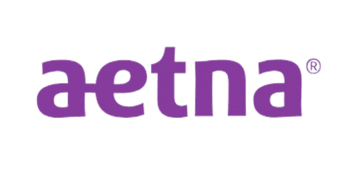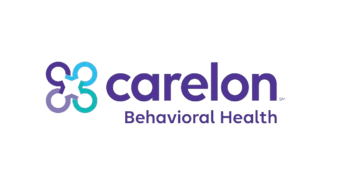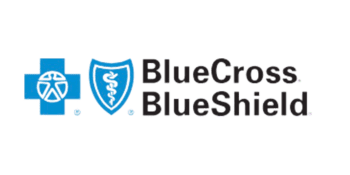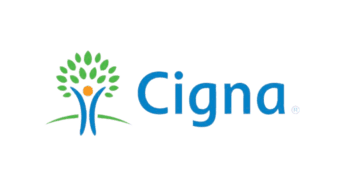Integrated Dual Diagnosis Treatment (IDDT) for Teens and Adolescents in Dallas, Texas
Substance use disorders are common among individuals with severe mental illness. Some studies have shown the implementation of Integrated Dual Diagnosis Treatment (IDDT) can reduce substance use. BasePoint Academy’s integrated treatment programs for teens in Dallas, Texas, understand that concurrent treatment for mental health and substance abuse is far superior to treating one condition at a time.
Our multiple treatment centers and dedicated professionals support the well-being of Texas youth and their families by offering practical and personalized teen dual diagnosis treatment plans. Learn how integrated mental health and substance use treatment for adolescents can support teenage resilience. At BasePoint Academy, we’re experts in adolescent psychology, fully equipped to address teens’ mental health issues like PTSD, depression, anxiety, ADHD, and others. Call us for prompt assistance. You can also complete our convenient contact form, and a friendly representative will reach out shortly.
What Is a Co-Occurring Disorder?
Co-occurring Disorder, also known as dual diagnosis, refers to the simultaneous presence of a mental health disorder and a substance use disorder (SUD) in an individual. For teenagers, this often means grappling with complex layers of challenges that impact emotional, social, and academic life. At BasePoint Academy, our integrated dual diagnosis treatment approach addresses both conditions together, ensuring that teens receive comprehensive care tailored to their unique needs.
Adolescent development already involves significant change and stress. When teenage challenges like academic pressures, social anxiety, or family issues combine with mental health issues, the risks of developing a co-occurring disorder increase. Often, a teen may turn to substances to cope with feelings linked to depression, anxiety, or trauma. This can then develop into a substance use disorder, creating a cycle that becomes increasingly difficult to break without specialized co-occurring disorders treatment. Untreated, adolescent mental health issues may escalate, leading to more severe outcomes and impacting future opportunities and overall teenage well-being.
Coverage for Teen Integrated Dual Diagnosis Treatment
Our complimentary assessment with a licensed clinician will recommend the appropriate level of care for your teen struggling with a co-occurring condition. We can also check your insurance coverage levels.
Call us today to schedule a complimentary same-day assessment at (972) 357-1749 or complete our inquiry form.
Teenage Integrated Dual Dianosis Treatment Admissions
Different Types of Dual Diagnosis Disorders
Understanding the different types of dual diagnoses is essential, as each one presents unique challenges and requires a specialized approach to treatment. The following examples represent some common combinations seen in adolescents, although this is not an exhaustive list. Contact us at BasePoint Academy for more information.
Anxiety Disorders and Opioid Dependence
When a teen struggles with anxiety, they may turn to opioids to numb overwhelming teenage emotions or escape the physical symptoms of their anxiety. While this might provide temporary relief, opioid use can quickly lead to dependence, making it harder to cope without it. Over time, the anxiety and dependence can intensify, affecting relationships, school performance, and overall well-being.
Bipolar Disorder and Substance Abuse
Bipolar disorder and substance abuse often co-occur in teens, as they may use substances to cope with intense mood swings. However, substance use worsens mood instability, leading to more severe episodes and affecting social, academic, and family life. Integrated care for teens with dual diagnosis is crucial for helping your teen regain stability and confidence.
Post-Traumatic Stress Disorder (PTSD) and Drug Addiction
Post-Traumatic Stress Disorder (PTSD) is vastly different from everyday teenage stress and requires professional support. Co-occurring drug addiction often creates a tough cycle, with many teens turning to substances to escape overwhelming stress and flashbacks. This self-medicating can quickly lead to addiction, compounding their struggles. Dual diagnosis treatment for adolescents is essential.
Attention-Deficit Hyperactivity Disorder (ADHD) and Substance Use
Attention-Deficit Hyperactivity Disorder (ADHD) and substance use are common co-occurring issues among teenagers. The impulsive, risk-taking tendencies associated with ADHD can lead to experimentation with drugs or alcohol. This aspect of adolescent behavior often makes it challenging to manage urges or consequences, increasing the likelihood of developing a substance use disorder. Integrated treatment for addiction and mental health is crucial.
Eating Disorders and Stimulant Abuse
Eating disorders and stimulant abuse often co-occur. Stimulants can sometimes be misused to try to control weight or boost energy. Unfortunately, this pattern can quickly spiral, worsening both the eating disorder and dependency on stimulants. The physical toll of this combination is serious, affecting a teen’s overall health, mood, and energy levels. Comprehensive behavioral health and addiction treatment is essential.
Trauma-Related Disorders and Substance Use Disorders
Trauma-related disorders and substance use disorders often co-occur in teens, as those experiencing trauma may use substances to cope with their emotional pain. This cycle can complicate their mental health and overall well-being, making it challenging to break free. Seeking comprehensive substance use and mental health disorder care is essential to address both issues.
Signs and Symptoms of Dual Diagnosis in Teens
Recognizing the signs and symptoms of dual diagnosis in teens is crucial for early intervention. If you notice your teen exhibiting a combination of behavioral and emotional changes, it may indicate the presence of a mental health and substance use disorder. Understanding these signs can empower you to seek professional integrated dual diagnosis support for teens.
Some common indicators to look out for include, but are not limited to, the following:
- Extreme Mood Swings: Rapid shifts between feelings of depression, irritability, and euphoria. Such fluctuations can disrupt daily life and confuse the teen and their loved ones.
- Social Withdrawal: Teens may isolate themselves from family, friends, or activities they once enjoyed.
- Decline in Academic Performance: Struggling in school or a noticeable drop in grades can reflect the impact of these disorders on their ability to focus and engage.
- Substance Abuse: Frequent use of drugs or alcohol as a coping mechanism.
- Risky or Impulsive Actions: Teens may engage in unsafe activities or make hasty decisions without considering the consequences.
- Inability to Concentrate: Difficulties paying attention in school and at home.
- Sleep Changes: Erratic sleep patterns might manifest as insomnia or excessive sleeping.
- Aggression/Hostility: Unexplained anger or irritability, alongside frequent feelings of anxiety or panic, indicating persistent worry or fear.
- Depression: Long periods of feeling down or hopeless.
By being aware of these signs and symptoms, you can take proactive steps to support your teen and encourage them to seek the appropriate dual diagnosis therapy for youth. Early intervention can make a significant difference in their recovery, allowing them to regain control and improve their overall well-being.

What Is Integrated Care for Teens with Dual Diagnosis?
This holistic approach to dual diagnosis addresses mental health and substance abuse issues simultaneously. It recognizes that these conditions often coexist and that treating them in isolation can lead to suboptimal outcomes. Integrated dual diagnosis treatment for teens combines therapy for mental health disorders with substance abuse therapy, allowing for a comprehensive plan tailored to the unique needs of adolescents.
This type of integrated treatment targets the symptoms of both conditions and explores the underlying factors contributing to them. It fosters a deeper understanding of how they interact and impact your teen’s life. Integrated dual diagnosis treatment, or IDDT for adolescents in Texas, emphasizes the importance of providing co-occurring mental health and addiction treatment in a unified framework. This involves therapists and counselors collaborating closely, creating a seamless experience for your teen. By offering this coordinated care model, integrated dual diagnosis treatment for teens ensures your child receives the support they need in a nurturing environment. This approach equips teens with effective coping strategies, improves overall functioning, and ultimately leads to a healthier, more balanced life. It significantly enhances their chances of mental health and addiction recovery.
Types of Integrated Dual Diagnosis Treatment Programs for Teens
Supporting teens with dual diagnosis involves understanding the different types of Integrated Dual Diagnosis Treatment (IDDT) programs. Comprehensive dual-diagnosis rehabilitation programs address mental health and substance use disorders simultaneously, ensuring your teen receives the necessary care. IDDT programs for teens typically combine various therapeutic modalities tailored to their unique challenges, providing an effective framework for recovery.
Partial Hospitalization Program for Teen IDDT
A Partial Hospitalization Program (PHP) for Integrated Dual Diagnosis Treatment (IDDT) offers a structured yet semi-flexible option for teens facing mental health and substance abuse challenges at the same time. A PHP’s comprehensive care for mental health and substance abuse includes intensive therapeutic support while allowing adolescents to return home in the evenings.
Focused on addressing both conditions simultaneously, PHPs equip your teen with the skills and resources necessary to manage their mental health effectively while overcoming substance use. Participating in a PHP allows your teen to access various adolescent therapy options, including group therapy, individual counseling, and skill-building sessions. These teen mental health resources are crucial in helping them develop coping strategies, improve emotional regulation, and build a support network.
Intensive Outpatient Program for Teen IDDT
An Intensive Outpatient Program (IOP) for Integrated Dual Diagnosis Treatment (IDDT) is an excellent option if your child needs focused support for co-occurring mental health and substance abuse issues while maintaining their daily routines. This program combines mental health and substance abuse therapy with flexible scheduling. The IOP is designed to provide intensive support without requiring residential treatment.
Youth counseling and participation in teenage support groups will give your teen valuable insights and coping strategies to navigate their challenges. These support groups create a safe space for adolescents to share experiences and connect with peers facing similar struggles, fostering a sense of community and understanding. Choosing an IOP gives your teen access to the resources and encouragement necessary for lasting recovery and personal growth.
Crisis Stabilization Services for Teen IDDT
Crisis stabilization services for teens undergoing Integrated Dual Diagnosis Treatment (IDDT) provide essential support during mental health and substance use crises. These services focus on immediate intervention for adolescents experiencing severe symptoms related to psychiatric disorders or substance use. By offering a safe environment and targeted care, these programs can stabilize your teen, setting the foundation for ongoing treatment.
At BasePoint Academy, we understand the complexities of parenting teenagers with dual diagnoses. Crisis stabilization services can effectively bridge the gap between emergency care and comprehensive treatment. This proactive approach addresses your teen’s urgent needs and ensures they receive the necessary resources and support to continue their recovery. By being aware of these services, you can better advocate for your child and help them access the required care during challenging times.

Types of Therapy and Counseling for Adolescent IDDT
When it comes to supporting adolescents with Integrated Dual Diagnosis Treatment (IDDT), various types of adolescent therapy for co-occurring conditions and youth counseling methods can play a crucial role in their recovery. This combined approach to substance use and psychiatric disorder treatment emphasizes the importance of a tailored approach to meet your teen’s unique needs.
Trauma-Focused Cognitive Behavioral Therapy (TF-CBT)
Trauma-Focused Cognitive Behavioral Therapy (TF-CBT) is an effective treatment for adolescents facing trauma alongside mental health and substance use challenges. This evidence-based therapy emphasizes the connection between thoughts, feelings, and behaviors, providing your teen with coping strategies to manage emotions and reduce harmful behaviors.
Solution-Focused Brief Therapy (SFBT)
Solution-Focused Brief Therapy (SFBT) is a practical, goal-oriented approach that can particularly benefit teens with dual diagnosis challenges. This therapy emphasizes identifying strengths and resources rather than focusing on problems, helping your teen envision their desired future and the steps needed to achieve it.
In the context of dual diagnosis support for teens, SFBT facilitates quick progress by encouraging your child to recognize their capabilities, fostering teenage resilience. This approach boosts confidence and promotes hope and motivation, enabling teens to navigate the complexities of their mental health and substance use issues.
Cognitive Behavioral Therapy (CBT) for Teen Dual Diagnosis
CBT is a highly effective component of (Integrated Dual Diagnosis Treatment) IDDT programs for teens. It focuses on the relationship between thoughts, feelings, and behaviors, helping to identify and modify negative thought patterns that contribute to challenges. Dual diagnosis treatment for adolescent mental health issues, using CBT, provides practical tools to manage symptoms, develop coping strategies, and build healthier habits.
Dialectical Behavior Therapy (DBT) for Teen Dual Diagnosis
Dialectical Behavior Therapy (DBT) is a practical treatment approach for teenagers with dual diagnosis. This method combines cognitive-behavioral techniques with mindfulness practices, helping your adolescent learn to manage intense emotions and improve interpersonal relationships. In the context of co-occurring disorders treatment, DBT equips your teen with essential skills to navigate the complexities of their mental health and substance abuse challenges.
Motivational Interviewing (MI)
MI is an integral component of dual diagnosis therapy for youth, aimed at enhancing your teen’s motivation to change and engage in their recovery. This client-centered style encourages open dialogue about their thoughts and feelings regarding mental health and substance use challenges, allowing adolescents to explore their ambivalence and identify personal reasons for change.
Family Therapy for Teenagers
Family therapy for teenagers is a vital component of comprehensive care for mental health and substance abuse. This therapeutic approach involves the entire family unit and a supportive environment where everyone can express their feelings and concerns. By addressing family dynamics, this therapy helps identify patterns of behavior that may contribute to your adolescent’s challenges, fostering open communication and understanding.
Through family therapy, your teen can feel more supported in their recovery journey as family members learn to work together in addressing mental health and substance use issues. This collaborative approach strengthens family bonds and equips teens with essential coping skills and strategies to navigate challenges.
Holistic Therapy
A holistic approach to dual diagnosis focuses on the whole person rather than just the symptoms of mental health and substance use issues. This method recognizes the interconnectedness of emotional, physical, and spiritual well-being, incorporating various modalities such as mindfulness, yoga, nutrition, and art therapy to address your teen’s unique needs.
By engaging in holistic therapy, your adolescent can explore different healing avenues, fostering self-awareness and personal growth. This supportive environment encourages the development of healthy coping mechanisms and teenage resilience.
BasePoint Accepts Health Insurance for IDDT
We accept most major health insurance providers in Texas and can check your integrated dual diagnosis coverage levels on your behalf.
How to Find Integrated Dual Diagnosis Treatment for Teens Near Me
At BasePoint Academy, we’re dedicated to promoting the mental well-being of young individuals throughout Dallas, Texas, and beyond. Our integrated treatment for addiction and mental health highlights our commitment to adolescent psychology, as reflected in the numerous positive patient outcomes. To find out more and check your insurance coverage for integrated dual diagnosis treatment for teens, call (972) 357-1749 today.
- Arlington, Texas: 3900 Arlington Highlands Blvd, Suite 237, Arlington, TX 76018
- Forney, Texas: 713 W Broad St, Suite 200, Forney, TX 75126
- Frisco, Texas: 8275 Judges Way, Suite 100I, Frisco, TX 75036
- McKinney, Texas: 4733 Medical Center Drive, McKinney, TX 75069

Steps to Find an Integrated Dual-Diagnosis Treatment Facility
Finding an integrated dual-diagnosis treatment facility that emphasizes family involvement is crucial for supporting teens’ mental health. By following these steps, you can identify a treatment center that aligns with your teen’s and family’s needs, providing the necessary support. Here are some helpful tips for your search:
Research Online: Use search engines to discover nearby integrated dual-diagnosis treatment centers. Search for terms like “integrated dual diagnosis treatment for teens” or “Adolescent integrated dual diagnosis treatment in Dallas, Texas” to find relevant options.
Check Reviews and Testimonials: Look for reviews from other families to evaluate the effectiveness of each treatment center. Testimonials can give you valuable insights into others’ experiences and the quality of care provided.
Ask for Recommendations: Consult your pediatrician, school counselor, or other parents for recommendations. They can often point you toward integrated dual-diagnosis programs that have successfully supported other families.
Explore Teenage Support Groups: Participate in teenage or parent-focused group therapy groups. These gatherings can foster community and offer firsthand suggestions for suitable integrated mental health and substance use treatment for adolescents.
Visit Facilities: Whenever possible, arrange visits to potential treatment centers. Meeting with the staff and observing the environment can help you assess whether it’s the right fit for your teen.
What Is the BasePoint Difference?

7am to 7pm CST
7 Days a Week

Full Time Physican
On Site

We Transport
To and From

Therapy Involving
the Whole Family

Family
Owned

Does Insurance Cover Integrated Dual Diagnosis Treatment for Teens?
Yes, many insurance plans cover integrated dual-diagnosis treatment for teens, including support for addiction and mental health counseling. However, coverage can vary significantly based on your specific policy and provider. Reviewing your plan’s details is essential to understand what services are included and any potential out-of-pocket costs.
To maximize your benefits, check your insurance with a healthcare provider like BasePoint Academy to maximize your benefits. Ask about coverage for integrated mental health and substance use treatment for adolescents. Understanding the details will help you make informed decisions regarding your child’s care and ensure they receive the necessary support for their mental health and substance use challenges.
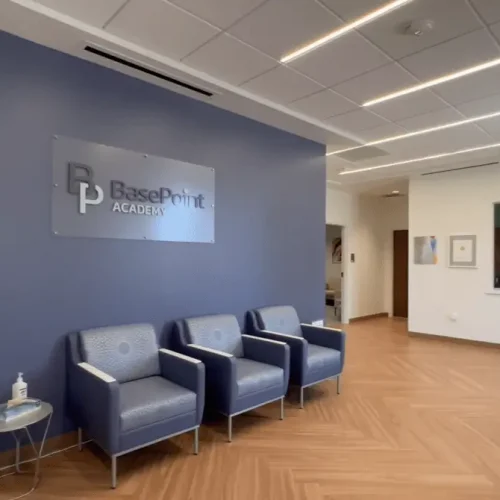
Which Health Insurance Providers Cover IDDT for Teenagers?
Several major health insurance providers offer Integrated Dual Diagnosis Treatment (IDDT) coverage for teens. These providers include Aetna, Cigna Healthcare, UnitedHealthcare, and Blue Cross Blue Shield. Insurers are mandated to provide mental health and substance abuse treatment services, including IDDT programs for teens. However, coverage details will vary, so reviewing your policy is crucial.
When seeking integrated dual-diagnosis treatment for teens, it’s a good idea to contact your insurer or a healthcare provider directly to understand the extent of your benefits. BasePoint Academy can shed light on any requirements, exclusions, or limitations that might apply. By staying informed about your insurance options, you can better navigate IDDT for adolescents in Texas while ensuring your teen receives the necessary support.
Integrated Dual Diagnosis Testing and Assessment for Teen Boys and Girls
Integrated dual diagnosis testing and assessment are essential steps in identifying and addressing the complex needs of teens struggling with co-occurring disorders. These assessments evaluate mental health symptoms, substance use history, behavioral patterns, and family dynamics to provide a complete picture of a teen’s needs.
At BasePoint Academy, we offer free integrated dual diagnosis testing tailored for all adolescents as part of our admissions process. Our assessments give you and your family the insights to create a strong foundation for your teen’s integrated dual diagnosis treatment. If you want your teen assessed for dual diagnosis rehabilitation programs at BasePoint Academy, call (972) 357-1749. Our team is here to guide and support you every step of the way.
What Is the Youth IDDT Program Admissions Process?
Understanding the admissions process for an Integrated Dual Diagnosis Treatment (IDDT) program is essential for ensuring your teen receives the proper support for their mental health and substance use concerns. Although the specifics can differ from one treatment center to another, here’s a general overview of what you can expect during the admissions process:
- Initial Contact: The first step is to contact the treatment center. You can do this via phone, email, or their website’s contact page. This correspondence lets you ask any initial questions about the program, services offered, and what to expect moving forward.
- Inquiry and Information Gathering: The facility will gather information regarding your teen’s needs after initial contact. This may include details about their mental health history, substance use, and any other relevant information that can help the staff better understand your teen’s situation.
- Intake Assessment: An intake assessment will be scheduled to evaluate your teen’s mental health and substance use history more comprehensively. This assessment typically involves a series of questionnaires and interviews to gauge their current state and any underlying issues that may need to be addressed.
- Initial Evaluation: A clinical team will conduct an initial evaluation following the intake assessment. This process aims to understand better your teen’s challenges, strengths, and treatment needs, helping the team determine the best course of action.
- Treatment Plan Development: A tailored treatment plan will be developed based on the information gathered during the assessments. This plan outlines specific goals, therapeutic approaches, and any additional resources that may benefit your teen’s recovery.
- Insurance Verification and Financial Counseling: The facility will verify your insurance coverage before admission and discuss any potential out-of-pocket costs. Financial counselors can assist in exploring payment options and ensuring you understand the economic aspects of treatment.
- Admission Approval: Once the treatment plan is finalized and insurance is confirmed, the facility will approve admission. This step ensures that everything is in place for your teen to begin integrated dual diagnosis treatment.
- Family Orientation: Many facilities, including BasePoint Academy, offer a family orientation session. This session helps you understand the program’s structure and expectations and how to support your teen throughout the process. It is an excellent opportunity to ask questions and learn how to engage effectively in your teen’s recovery.
- Admittance to the Program: After completing the previous steps, your teen will officially be admitted. They will start participating in the various therapies and support services outlined in their treatment plan.
- Ongoing Monitoring and Adjustments: Staff will continuously monitor your teen’s progress throughout treatment. Regular assessments and feedback sessions will facilitate any necessary adjustments to the treatment plan, ensuring that your teen receives adequate support as they work toward recovery.
How Much Does Integrated Dual Diagnosis Treatment for Teens Cost in Dallas, Texas?
The cost of Integrated dual diagnosis treatment for teens in Dallas, Texas, varies widely, typically ranging from a few thousand dollars for outpatient programs to tens of thousands for more intensive options. The total cost depends on factors like insurance coverage, care level, treatment duration, and additional services included in the program.
Many families use health insurance to help cover costs, and some treatment centers offer financial counseling and flexible payment plans. At BasePoint Academy, we prioritize accessible care. We work closely with families to understand available payment options, including insurance coverage, for teen mental health and substance abuse therapy. Contact us for specific pricing and financial guidance to explore what best fits your family’s needs and budget.

Contact The BasePoint Academy for Teen IDDT Today!
Does your teenager have co-occurring disorder symptoms? If you are concerned about your teen’s mental health, contact BasePoint Academy to discuss an integrated dual diagnosis treatment plan for your teen.
Statistics on Co-Occurring Disorders in Teen Boys and Girls for Texas Families
- According to the Kaiser Family Foundation (KFF), four percent of adolescents experienced both a major depressive episode and a Substance Use Disorder (SUD) within the past year during 2022.
- A recent study looked at young people from the Texas Youth Depression and Suicide Research Network (TX-YDSRN, 2023) who have both Major Depressive Disorder (MDD) and Obsessive Compulsive Disorder (OCD). It found that those with both MDD and OCD experience more intense depression symptoms than those with just MDD. They also have more physical symptoms related to movement and show less loss of interest or pleasure in activities, possibly because OCD’s behavioral patterns keep them more engaged.
- A recent study claims that youth with ADHD have a higher likelihood of developing a substance use disorder compared to those without ADHD.
- A study published by the National Institutes of Health (NIH) examined trends and disparities in co-occurring major depression and substance use disorders among U.S. adolescents from 2011 to 2019. The study found treatment disparities particularly affecting boys and older adolescents, as well as Hispanic, Asian, Native Hawaiian, and Pacific Islander youth.
- An assessment of substance use and psychiatric comorbidity among youths in Texas state-run juvenile correctional facilities, conducted from January 1, 2004, to December 31, 2008, revealed that 73% had a Substance Use Disorder (SUD) along with at least one psychiatric disorder. Additionally, 22.2% (19.9% of males and 43.5% of females) had an SUD alongside a major psychiatric disorder, which included psychotic, depressive, or bipolar disorders.
- Brown University cites as many as 45% of adolescents and young adults with mental health disorders also experience a co-occurring substance use disorder. In comparison, over 65% of youth with substance use disorders have an accompanying mental health condition.
- Frequently documented co-occurring mental disorders among adolescents include conduct disorder, oppositional defiant disorder, ADHD, anxiety, and PTSD.
Sources
- World Health Organization. (n.d.). Mental health of adolescents. World Health Organization. Retrieved from https://www.who.int/news-room/fact-sheets/detail/adolescent-mental-health on July 11, 2023
- Horowitz, J. M. (2019, February 20). Most U.S. teens see anxiety and depression as a major problem among their peers. Pew Research Center’s Social & Demographic Trends Project. Retrieved from https://www.pewresearch.org/social-trends/2019/02/20/most-u-s-teens-see-anxiety-and-depression-as-a-major-problem-among-their-peers/ on July 11, 2023

